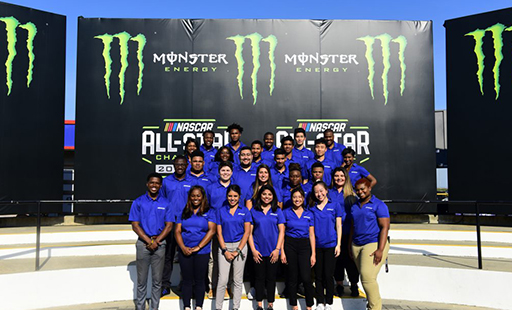How To Create A Diverse & Inclusive Internship Program In Your Workplace
By: Veronica Figueroa Fernandez, PRSA Orlando Diversity & Inclusion Chair
Building a diverse and inclusive company culture in the workplace has become a primary focus for many organizations, especially over the past year. Whether you’re running a well-known brand or a small business, building the right foundations for diversity and inclusion within your business should be an integral part of your diverse growth strategy. D&I college internships can be a stepping stone at building diversity within your company and can be one of the most effective ways to create meaningful change.
Interns bring immense value to organizations, often bringing cutting-edge ideas to the table that can lead your company to success. A diverse class of interns means you’ll gain access to unique perspectives and develop an inclusive company culture. However, because internships are often unpaid, they become inaccessible to many in the Black, Indigenous, and People of Color (BIPOC) community.
Jordan Leatherman, Diversity & Inclusion Senior Account Executive at NASCAR, recently spoke to us about her organization’s diversity internship program. Twenty years ago, NASCAR created the NASCAR Diversity Internship Program (NDIP) to create an opportunity for students of color. Over the last two decades, the program has successfully grown to be a staple within the industry with 30 students participating each summer.
The NDIP is a 10-week paid summer internship aimed at BIPOC who are currently enrolled in an undergraduate or graduate degree program or are considered a recent graduate. Eligible participants begin their experience with a 3-day orientation weekend centered around the NASCAR All-Star Race, and throughout the internship, they have access to weekly Lunch & Learns with industry executives, networking opportunities, and a mentorship program.
If you’re just getting started on creating a diverse and inclusive internship program in your workplace, Jordan Leatherman has shared three tips to select candidates from different backgrounds.
Diversify your candidate pool.
In order to hire interns who contribute to your organization’s diversity and inclusion goals, you will have to diversify your recruitment tactics. NASCAR currently works with Historically Black Colleges & Universities (HBCUs), Hispanic-Serving Institutions (HSIs), and top universities through Handshake to identify candidates for internships. Handshake is a platform that connects students on college campuses with internships and entry-level jobs. NASCAR also partners with organizations like the United Negro College Fund (UNCF), Association of Latino Professionals For America (ALPFA), and National Association of Black Journalists (NABJ) to promote the internship application.
Leverage professional associations and organizations focused on serving diverse populations, and consider advertising in and attending events sponsored by those organizations. Niche job boards such as DiversityWorking, 70 Million Jobs, and Hirepurpose are just a small sample of how to connect with new audiences. Throughout the last 20 years, NASCAR has hired more than 20 interns from the NASCAR Diversity Internship Program for numerous roles in the organization including Brandon Thompson, VP of Diversity & Inclusion, and Kathryn Lee, Senior Manager of Marketing Activation.
.
Pay. Your. Interns!
Internships are a critical component of a student’s college career, giving them a competitive advantage in the job market and an opportunity to gain experience in their desired field. However, financial barriers often prevent low-income students from pursuing and accepting unpaid internships. Students who come from disadvantaged backgrounds may need an income in order to pay for classes, their rent, or other necessities, leaving these valuable internships off the table.
When organizations limit their internships to those who can afford them, their less affluent peers will graduate without the relevant work experience necessary to quickly land an entry-level job. “Paid internships eliminate barriers to students who would not be financially able to participate in unpaid internships. Historically unpaid internships are typically less diverse than their paid counterparts,” said Leatherman.
Unpaid internships are a controversial topic in all industries, but with the knowledge that the public relations industry has a diversity problem, it is important to address the issue and enact change from the bottom up. In fact, the PR Council announced last year that its members pledged to pay their interns in the United States at least minimum wage in their market. The policy went into effect on January 1, 2020.
Create an environment that is inclusive and welcoming.
Leatherman says that it is important to institute diversity and unconscious bias training within your organization prior to the start of the internships. These programs are designed to expose employees to their unconscious biases and provide tools to eliminate discriminatory behaviors and thoughts.
Biases are formed based on experiences, things you hear, media portrayals, institutional influences, and other external factors. When faced with situations that fit into these preconceived opinions people have created, they make a number of automatic perceptions and assumptions that are often incorrect. Making D&I a part of your organizational policies and systems is key to disrupt patterns of thinking and ensure everyone, from interns to your executive leadership, is on the same page.
As employers move toward full D&I in the workplace, they should incorporate a comprehensive definition of diversity that applies to all hiring practices, including internship programs. For more ideas on how to create an inclusive internship program, check youth.gov’s how-to guide for employers.










